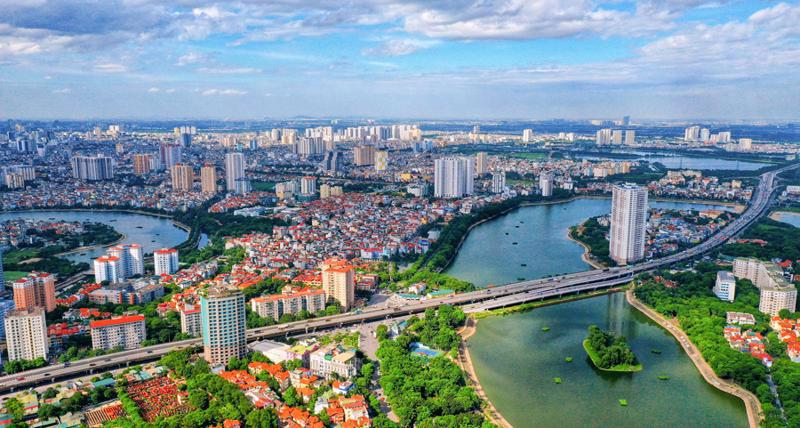Deputy Prime Minister Tran Hong Has has signed a Prime Ministerial Decision approving the adjusted Master Plan for Hanoi to 2045 with a vision to 2065, under which the capital city will have five urban zones.
The southern zone of the Red River includes the historical core and extended urban areas in districts such as Ba Dinh, Hoan Kiem, and Hai Ba Trung. The focus will be on reducing congestion by relocating central government offices, universities, and hospitals, transforming vacated land into public facilities, green spaces, and cultural hubs.
The eastern zone covers Long Bien and Gia Lam districts, emphasizing trade, logistics, healthcare, and education.
The northern zone, beyond the envisioned Northern City, includes comprehensive plans for clean energy, eco-tourism, and smart urban initiatives linked to the Red River’s landscape.
The western zone supports national science, technology, and ecological tourism industries, aligning with its role as a hub for advanced education.
The southern zone targets logistics and industrial development to bolster economic integration with other Red River Delta provinces.
By 2030, Hanoi’s population is projected to reach 12 million, with an urbanization rate of 65–70%. This figure is expected to rise to 14.6 million by 2045, with urbanization exceeding 75%.
Under the adjusted master plan, the city will develop its socio-economic infrastructure system, including industrial clusters, trade services, tourism, education and training, healthcare, culture and sports.
The city will develop 23 industrial parks (IPs) with a total area of 5,800 ha of land, including eight existing IPs, 2 IPs that are under construction and 13 new IPs.









 Google translate
Google translate